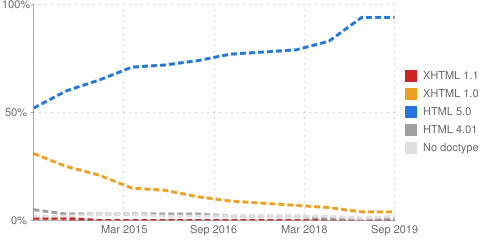After 4 years of development HTML 5.0 finally exited draft status and became a W3 Candidate Recommendation on Dec 17, 2012. HTML 5 will now go through the final stages of the W3 standardization process before becoming a full Recommendation in 2014 (the final published standard). The only changes now to HTML 5.0 will be bug fixes, fixing typos and the possible removal of "at risk" features.
New features will be added to the HTML 5.1 draft specification, which is planned to become a Candidate Recommendation in 2014.
At risk features
Some features are deemed at risk features because they don't have two separate, fully working implementations. The list of at risk features includes:
<hgroup>and the HTML 5 heading outline algorithm<menu>andcontextmenuattribute (context menus)<dialog><details>and<summary><input type=color><input type=datetime>, <input type=month>, <input type=week>, <input type=time>, <input type=datetime-local>
In the event that browser vendors are unable to implement these features as specified, these are likely to be removed from the HTML 5.0 final recommendation.
HTML 5 statistics

Our online service scans around 200,000 pages each month - these are often new sites in development. Around 30% of pages scanned in December 2012 use the HTML 5 doctype, but of these only half (or 15% of the total scanned) use new HTML 5 elements and attributes (things like <footer> and <input required>). The XHTML 1.0 and 1.1 document types (the previous versions of HTML) accounts for just under 50% of pages scanned.
Key takeaways
HTML 5 use is increasing steadily and is likely to accelerate as it nears full recommendation status.